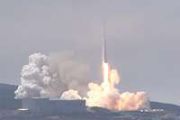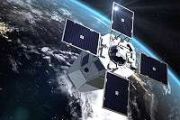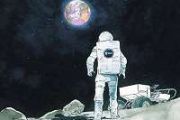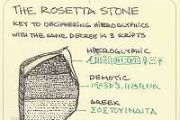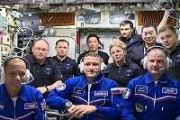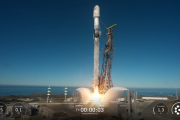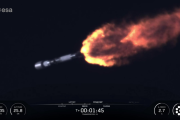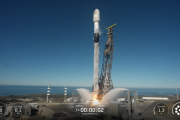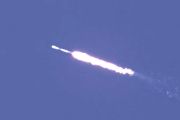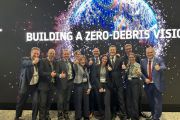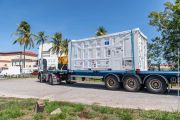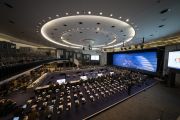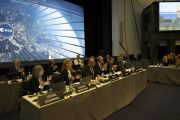
Copernical Team
CPUT launches 3rd Satellite mission this week
 On Thursday 13 January the Cape Peninsula University of Technology is set to launch its third satellite mission into space from the Cape Canaveral launch site in the USA.
The MDASat (Marine Domain Awareness) constellation has two main priorities namely ocean economy and healthcare and has been mandated by the Department of Science and Innovation to enhance South Africa's ocean's sovereignt
On Thursday 13 January the Cape Peninsula University of Technology is set to launch its third satellite mission into space from the Cape Canaveral launch site in the USA.
The MDASat (Marine Domain Awareness) constellation has two main priorities namely ocean economy and healthcare and has been mandated by the Department of Science and Innovation to enhance South Africa's ocean's sovereignt North Pole solar eclipse excited auroras on the other side of the world
 A solar eclipse over the Arctic created changes in auroras in both of Earth's hemispheres due to connections through the planet's magnetic field, according to a new study. The new work could help scientists predict changes in the near-Earth environment that can interfere with satellite communication.
On 10 June 2021, the moon's shadow darkened much of the Earth's northern polar region, pro
A solar eclipse over the Arctic created changes in auroras in both of Earth's hemispheres due to connections through the planet's magnetic field, according to a new study. The new work could help scientists predict changes in the near-Earth environment that can interfere with satellite communication.
On 10 June 2021, the moon's shadow darkened much of the Earth's northern polar region, pro Researchers Observe Massive CME on Distant, Sun-Like Star
 EK Draconis illuminates an unimagined picture of how superflares may affect interplanetary space through coronal mass ejections
Welcome to the New Year! While Earth celebrated 2022's arrival with displays of fireworks, the greatest "fireworks show" in our solar system often occurs on the Sun. Its atmosphere is a venue for dynamic sunspots, solar flares, and dramatic encores of released magnetic
EK Draconis illuminates an unimagined picture of how superflares may affect interplanetary space through coronal mass ejections
Welcome to the New Year! While Earth celebrated 2022's arrival with displays of fireworks, the greatest "fireworks show" in our solar system often occurs on the Sun. Its atmosphere is a venue for dynamic sunspots, solar flares, and dramatic encores of released magnetic Vast bubble in interstellar space source of all nearby, young stars
 The Earth sits in a 1,000-light-year-wide void surrounded by thousands of young stars - but how did those stars form?
In a paper appearing in Nature, astronomers at the Center for Astrophysics | Harvard and Smithsonian (CfA) and the Space Telescope Science Institute (STScI) reconstruct the evolutionary history of our galactic neighborhood, showing how a chain of events beginning 14 million
The Earth sits in a 1,000-light-year-wide void surrounded by thousands of young stars - but how did those stars form?
In a paper appearing in Nature, astronomers at the Center for Astrophysics | Harvard and Smithsonian (CfA) and the Space Telescope Science Institute (STScI) reconstruct the evolutionary history of our galactic neighborhood, showing how a chain of events beginning 14 million Webb Begins Its Months-Long Mirror Alignment
 Webb has begun the detailed process of fine-tuning its individual optics into one huge, precise telescope.
Engineers first commanded actuators - 126 devices that will move and shape the primary mirror segments, and six devices that will position the secondary mirror - to verify that all are working as expected after launch. The team also commanded actuators that guide Webb's fine steering
Webb has begun the detailed process of fine-tuning its individual optics into one huge, precise telescope.
Engineers first commanded actuators - 126 devices that will move and shape the primary mirror segments, and six devices that will position the secondary mirror - to verify that all are working as expected after launch. The team also commanded actuators that guide Webb's fine steering Are astronomers seeing a signal from giant black holes?
 An international team of astronomers has discovered what could be the early sign of a background signal arising from supermassive black holes, observed through low-frequency gravitational waves. These scientists are comparing data collected from several instruments, including the National Science Foundation's Green Bank Telescope (GBT.)
Gravitational Waves ripple through spacetime at a lig
An international team of astronomers has discovered what could be the early sign of a background signal arising from supermassive black holes, observed through low-frequency gravitational waves. These scientists are comparing data collected from several instruments, including the National Science Foundation's Green Bank Telescope (GBT.)
Gravitational Waves ripple through spacetime at a lig Cosmic explosions offer new clue to how stars become Black Holes
 Scientists have witnessed for the first time exactly what happens to the most massive stars at the end of their lives.
Most very large stars explode in a fiery supernova explosion that leaves behind a neutron star in a process frequently witnessed by Earth's most powerful telescopes.
But some - the most massive, 30 times the size of the Sun or more - are believed to undergo a less vi
Scientists have witnessed for the first time exactly what happens to the most massive stars at the end of their lives.
Most very large stars explode in a fiery supernova explosion that leaves behind a neutron star in a process frequently witnessed by Earth's most powerful telescopes.
But some - the most massive, 30 times the size of the Sun or more - are believed to undergo a less vi It all comes down to the first electron
 Every living thing requires energy. This is also true of microorganisms. This energy is frequently generated in the cells by respiration, that is by the combustion of organic compounds, in other words: food. During this process, electrons are released which the microorganisms then need to get rid of. In the absence of oxygen, microorganisms can use other methods to do so, including transporting
Every living thing requires energy. This is also true of microorganisms. This energy is frequently generated in the cells by respiration, that is by the combustion of organic compounds, in other words: food. During this process, electrons are released which the microorganisms then need to get rid of. In the absence of oxygen, microorganisms can use other methods to do so, including transporting New theory finds upcoming satellite mission will be able to detect more than expected
 The upcoming satellite experiment LiteBIRD is expected to probe the physics of the very early Universe if the primordial inflation happened at high energies. But now, a new paper in Physical Review Letters shows it can also test inflationary scenarios operating at lower energies.
Cosmologists believe that in its very early stages, the Universe underwent a very rapid expansion called "cosmi
The upcoming satellite experiment LiteBIRD is expected to probe the physics of the very early Universe if the primordial inflation happened at high energies. But now, a new paper in Physical Review Letters shows it can also test inflationary scenarios operating at lower energies.
Cosmologists believe that in its very early stages, the Universe underwent a very rapid expansion called "cosmi Increased space missions risk extraterrestrial contamination
 The days of the U.S.-Soviet Space Race are over, and the domain of space exploration is expanding daily to include more countries than ever before. With the advent of private companies such as Elon Musk's SpaceX, which aim to reduce the costs of space transportation, expeditions into our extraterrestrial surroundings are no longer limited to just two contenders.
Though it may seem like we
The days of the U.S.-Soviet Space Race are over, and the domain of space exploration is expanding daily to include more countries than ever before. With the advent of private companies such as Elon Musk's SpaceX, which aim to reduce the costs of space transportation, expeditions into our extraterrestrial surroundings are no longer limited to just two contenders.
Though it may seem like we 
